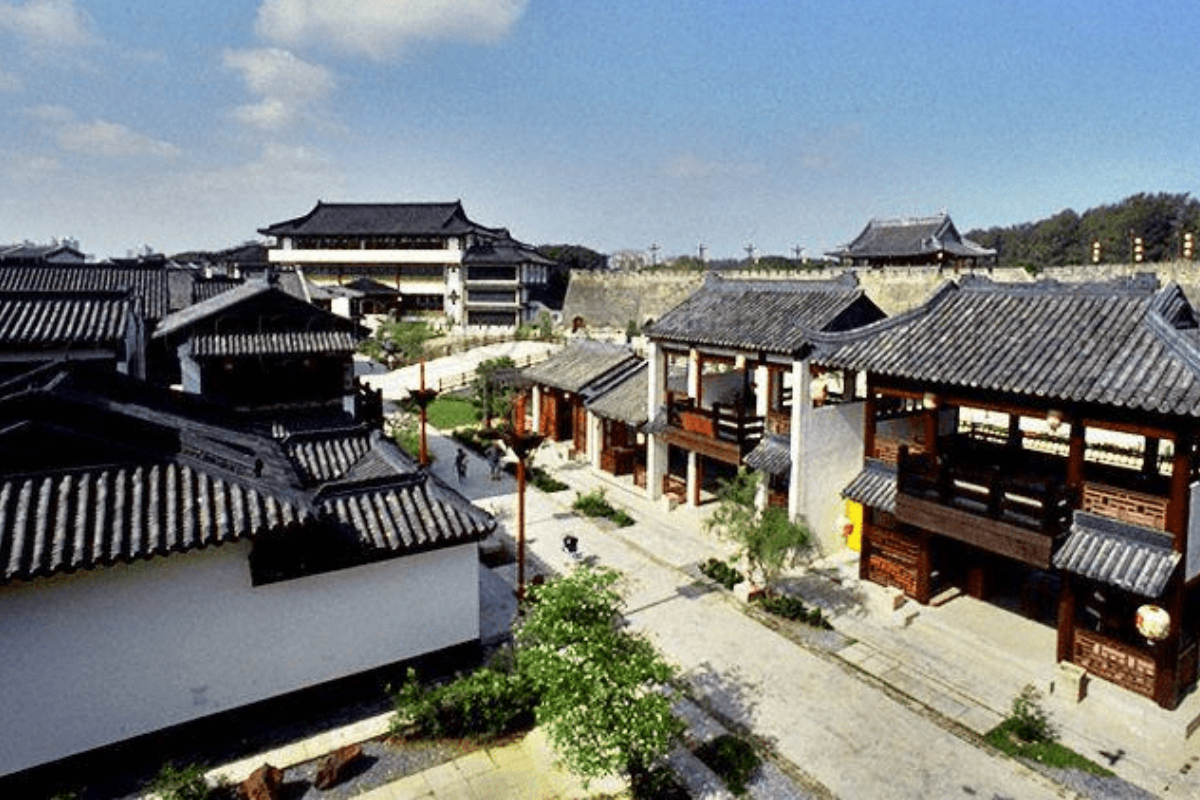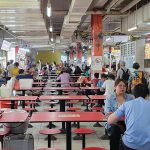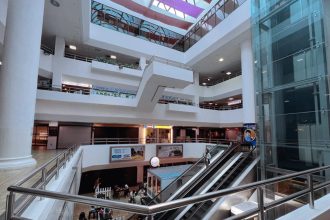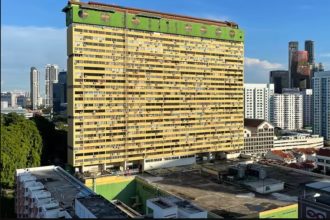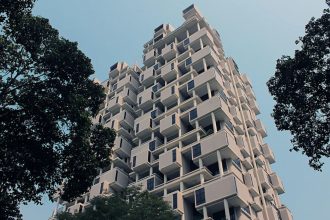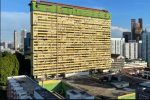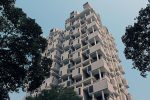Key takeaway
Tang Dynasty City failed because it mixed a costly historic set with a static visitor experience, charged a steep entry fee for the time, and sat far from Singapore’s main tourist flow. The park opened in January 1992 after a S$70 million build, then closed in 1999 as crowds thinned. Attempts to revive the site fell through. Demolition followed in 2008 to 2009. The land by Jurong Lake is now slated for housing, a reminder that location, repeatability, and access decide the fate of themed places.
Singapore once had a full-scale Tang-era “city” in Jurong, complete with palace walls, a mini Great Wall, and film sets built for costume dramas. It looked grand, yet it lasted only seven years. Here is how an ambitious idea met real-world constraints, and why the numbers and the experience did not line up for long.
What the park tried to be, and why that promise fell short
Tang Dynasty City was conceived as a hybrid. It was meant to be both a working movie backlot and a cultural attraction the public could visit. The S$70 million development opened in January 1992 at the corner of Jalan Ahmad Ibrahim and Yuan Ching Road, beside Jurong Lake. Ownership sat with Hong Kong tycoon Deacon Chiu’s Far East Holdings International, the same group behind Hong Kong’s Sung Dynasty Village. Visitors seeking similar heritage vibes can explore Ming dynasty-inspired architecture at Ming Court Hotel, which also reflects Chinese historical influence in Singapore.
The pitch was clear. Visitors would step into Chang’an of the Tang period while film crews used the same streets and courtyards for shoots. On paper, that promised authenticity and drama. In practice, the film use did not create enough repeatable content for family days out. Shows and guided commentaries leaned heavily on historical facts. Over time, the experience felt more like a set tour than an evolving park that rewarded return visits. It was often compared to Haw Par Villa cultural attractions, another fantasy-based theme park showcasing Asian culture.
Seven years from ribbon to shutter: the timeline that matters
The dates tell the story. Opening in January 1992. Closing in 1999 due to low visitorship. An attempted revival in 2001 that did not stick. A separate plan to turn the grounds into a Shaolin Temple-themed site collapsed in 2007. Demolition occurred between 2008 and 2009. Each step points to a project that could not sustain demand long enough to refinance its build and upgrade cycles.
The story of Istana Woodneuk historical landmark shows how historic landmarks can fade without continuous investment.
Price, value, and perceived fun
Pricing framed expectations. Contemporary accounts and retrospectives cite a roughly S$15 adult ticket in the 1990s, which felt hefty to many locals then. If a park prices like a thrill venue yet offers mostly shows, tableaux, and guided tours, repeat intent suffers. Value must match price, especially for multi-child families and school groups. Without new rides, seasonal overlays, or rotating spectacles, the offer plateaued.
Location and access, then and now
The park sat by Jurong Lake, near today’s Chinese Garden and Lakeside areas in Jurong East. That placed it away from the hotel clusters in the city core and Sentosa. Nearest rail access is along the East-West Line at Chinese Garden and Lakeside stations, but the broader visitor ecosystem then was still maturing. By contrast, the later Universal Studios Singapore opened within a full integrated resort on Sentosa, bundling hotels, dining, and other draws.
Static sets, thin refresh cycles
Sets are expensive to maintain. Sun and rain attack timber, stucco, and paint. Without healthy cash flow, cyclical refreshes slow, and surface weather. Reports and photos from its final years show wear and tear that undercut the illusion. The park closed in 1999 after poor visitorship, and by 2008, the site was being cleared. That arc is typical when capital-intensive attractions lack a robust reinvestment plan.
Who built it, and why the backers could not pivot fast
Far East Holdings International, led by Deacon Chiu, owned Tang Dynasty City through Tang Dynasty Village Singapore Pte Ltd. The concept echoed Sung Dynasty Village in Hong Kong, but Singapore’s visitor mix and market size were different. When attendance softened, the park lacked a pipeline of new anchors to pivot toward. Without alternative revenue, such as bundled resort stays or a strong events calendar, the owner’s choices narrowed to sale, rebrand, or exit. The outcome was exit.
Jurong Lake as a setting, and the missed network effect
The park neighboured the Chinese Garden, a 1975 landmark designed by architect Yuen Chen Yu. That public garden, with pagodas and bridges, has long been a free or low-cost visit tied directly to the Chinese Garden MRT. It offers calm, views, and open space. Tang Dynasty City tried to be a paid, denser version of the heritage nearby. Visitors had a choice. Many chose the garden, then moved on. The network effect that helps clusters thrive did not form around the theme park.
How it compares with other Singapore attractions
Haw Par Villa shows the power of curatorial renewal
Haw Par Villa is older, yet it has been refreshed through targeted upgrades and a museum layer. Its Hell’s Museum adds interpretation and programming within a familiar site. It is still a niche attraction, but it shows how a legacy park can keep public interest through curation and partnerships. That adaptive strategy was missing at Tang Dynasty City.
Universal Studios anchors a full resort
Universal Studios Singapore opened inside Resorts World Sentosa, with retail, hotels, and dining next door. It delivers rides, shows, and seasonal events on a large canvas. The capital base and reinvestment cycle are on a different scale, supported by the wider resort. That integrated model reduces the risk of a single park standing alone, which is what Tang Dynasty City faced in the 1990s.
The money question: why S$70 million was not enough
S$70 million was spent on building a convincing stage set in 1992. It did not cover decades of future upgrades. Theme venues depend on fresh hooks every two to three years. New shows, new zones, or new rides give reasons to return. Without those cycles, yield falls. Once attendance dipped below break-even, maintenance became a cost that could not be justified. Closure in 1999 confirmed the gap between capital outlay and ongoing renewal.
Access and wayfinding around the park’s Jurong site
The former entrance sat near 2 Yuan Ching Road, at the junction with Jalan Ahmad Ibrahim. The nearest rail access remains the East-West Line at Chinese Garden and Lakeside. Both stations frame Jurong Lake Gardens, with pedestrian routes leading around the water body. Back in the 1990s, coach tours and car visits were common for the park. That placed marketing pressure on tour operators and schools. If those channels slowed, footfall dropped too.
Program mix, and why the family day test matters
Great parks pass the family day test. There must be things for small kids, teens, grandparents, and everyone in between, for at least half a day. Tang Dynasty City offered costumed guards, stage shows, and museum-style zones. That appeals on a first visit. The second and third visits need variation. Without fresh layers, the park struggled to turn first-timers into fans. Internal content creation, such as a resident stunt team or seasonal lantern nights, might have helped, but records point to limited variety in later years.
After the gates shut: what happened to the land
Following failed revival attempts and the scrapped Shaolin Temple idea, demolition proceeded in 2008 to 2009. In later planning cycles, the broader area was earmarked for future homes within the Jurong Lake District vision. The plot’s story moved from culture showcase to urban living, aligning with national plans for more housing near rail and parks.
A short sequence of the park’s rise and fall
- 1988 to 1991, concept and build next to Jurong Lake under Far East Holdings International.
- January 1992, public opening with Tang era streetscapes and shows.
- Mid 1990s, attendance softens as novelty fades and refresh cycles lag.
- 1999, closure due to poor visitorship and economics.
- 2001 to 2007, revival efforts stall, Shaolin-themed plan falls through.
- 2008 to 2009, demolition and site clearance around Jurong Lake.
Fast facts that answer the title’s question
- Build cost was high for a non-ride park, at about S$70 million as of 1992.
- The concept relied on static sets, which age quickly in tropical weather.
- Low repeat value pushed per-visit pricing into focus, turning some families away.
- The site sat outside the main tourist belt, far from hotel clusters at the time.
- Without a wider resort to share costs, upgrade cycles stalled and attendance dipped.
| Building | Key facts | Nearest MRT | Notes |
|---|---|---|---|
| Tang Dynasty City | Completed 1992, closed 1999, demolished 2008 to 2009 | Chinese Garden, Lakeside | Former theme park near Jurong Lake |
| Chinese Garden | Opened 1975, public park with pagodas and bridges | Chinese Garden | Neighbouring free attraction |
| Haw Par Villa | Opened 1937, refreshed and reopened 2021 | Haw Par Villa | Heritage theme park showing longevity through renewal |
| Universal Studios Singapore | Opened 2010, part of Resorts World Sentosa | HarbourFront, Sentosa | Integrated model contrasts Tang Dynasty City’s standalone model |
Design choices that limited repeat visits
Most zones recreated imperial streets and courtyards. That gave atmosphere for photos and costumed performances, yet offered little kinetic play. In tropical heat, shaded seating, water features, and climate-controlled galleries matter. Without those, dwell time shortens. The result, fewer chances to cross-sell food, souvenirs, or shows. That hits per cap revenue, which funds upkeep and new content. The loop broke, making closure more likely.
Lessons for future heritage-themed builds in Singapore
Bundles beat standalones
Bundling attractions with hotels, retail, and transport nodes helps smooth seasonality. Resorts World Sentosa shows how an anchored cluster can carry multiple product types. Tang Dynasty City did not have that support, which amplified the risk when a single season underperformed.
Invest in renewal cycles, not just opening day
The opening day set was impressive. The missing piece was a plan for new anchors every few years. That cadence matters more than spectacle at launch. Without it, even well-made sets lose their pull. The park’s seven-year life is a case study in how fast novelty decays without planned refreshes.
Price must match perceived playtime
Families weigh ticket price against hours of engagement and heat comfort. If the equation looks tight, word of mouth cools. Tang Dynasty City’s reported price point clashed with a content mix that ran out of steam in a few hours, especially on hot days.
What stands there today, and what it says about planning
Cleared between 2008 to 2009, the site is now within an area set for future homes as part of the Jurong Lake District growth. That pivot reflects how land uses evolve with transport and housing needs. It also shows that even short-lived attractions leave a footprint in urban memory, shaping how planners frame public spaces, housing edges, and cultural nodes around Jurong Lake’s gardens and trails.
What this short life tells us about themed places in Singapore
The project proves that detail and craft are not enough if the day out feels one-note. A park can be beautiful, historically rich, and still miss the mark without a renewal engine and easy access to large visitor pools. Tang Dynasty City’s brief run shows the difference between a set and a living attraction. In Singapore, the winners keep adding reasons to return. This Jurong experiment could not, which is why a S$70 million dream lasted seven busy, then quiet, years. For more guidance on heritage and conservation in Singapore, see Singapore heritage conservation guidelines by the National Heritage Board.
